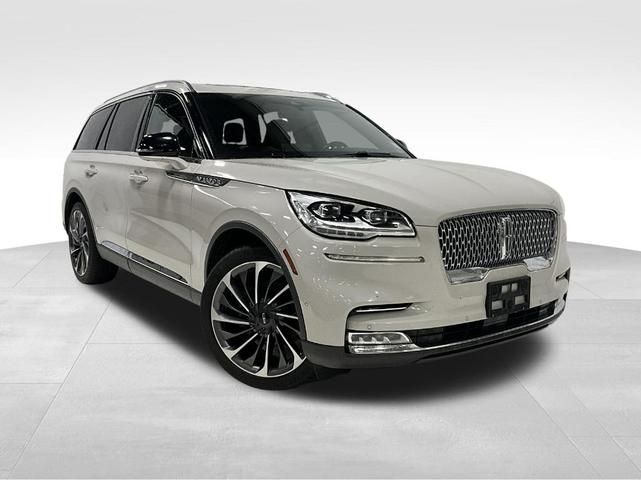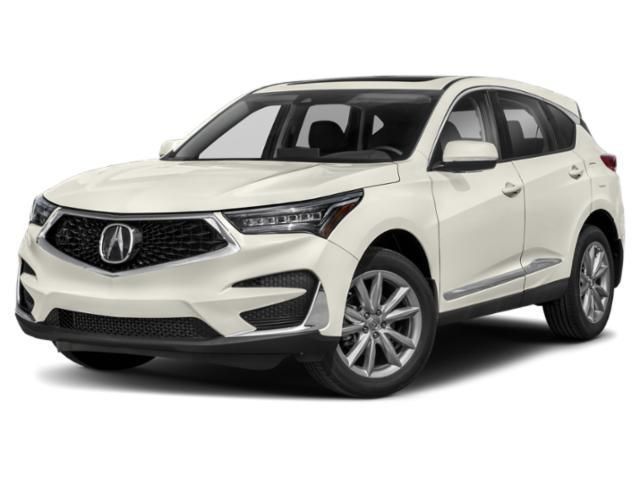
2020 LINCOLN AVIATORVIN: 5LM5J7XC4LGL01175
Historical Records
Damage to rear
Vehicle involved in a sideswipe collision with another motor vehicle
Airbag deployed
| Year | 2020 |
| ODO | 6723 mi |
| Seller | Hidden text (Hidden text) |
| MSRP | $5927 |
| Location | Milwaukee, WI, 53221 |
| Date | appeared 14 days ago latest price $5489 |
| Sale Website Type | classifieds |
| Notes | |
| Hidden text | |



| Body Style | SUV |
| Color | Infinite Black Metallic |
| Color (Interior) | Roast |
| Transmission | 10-Speed Automatic |
| Engine | 3.0L V6 24V GDI DOHC Twin Turbo |
| Drive | All-wheel Drive |
| Fuel Type | Gasoline |
- 3rd Row Shoulder Room : 54.0 "
- Hidden text
- Bluetooth Wireless Phone Connectivity
- Hidden text
- Cruise Control
- Hidden text
- Dual front air conditioning zones
- Hidden text
- Front Leg Room: 43.0"
- Hidden text
- Gross Vehicle Weight : 6,536 lbs.
- Hidden text
- Leather/piano black steering wheel trim
- Hidden text
- Overall Width : 82.3 "
- Hidden text
- Power remote passenger mirror adjustment
- Hidden text
- Rear Leg Room: 40.1"
- Hidden text
- Remote window operation
- Hidden text
- Speed Sensitive Audio Volume Control
- Hidden text
- Transmission hill holder
- Hidden text
- Wheel Width: 9
- 9667
- 50-50 Third Row Seat
- Hidden text
- Bucket Front Seats
- Hidden text
- Curb weight: 4,892 lbs.
- Hidden text
- Dual rear air conditioning zones
- Hidden text
- Front ventilated disc brakes
- Hidden text
- Heated driver mirror
- Hidden text
- Max cargo capacity: 78 cu.ft.
- Hidden text
- Overhead console: Mini with storage
- Hidden text
- Power Windows
- Hidden text
- Rear Stabilizer Bar: Regular
- Hidden text
- Roof rails
- Hidden text
- Steel spare wheel rim
- Hidden text
- Tumble forward rear seats
- Hidden text
- 3rd Row Hip Room: 40.9"
- Hidden text
- Audio controls on steering wheel
- Hidden text
- Coil rear spring
- Hidden text
- Driver seat memory
- Hidden text
- Front Head Room: 41.5"
- Hidden text
- Fuel Consumption: Highway: 24 mpg
- Hidden text
- Interior air filtration
- Hidden text
- Multi-Link Rear Suspension
- Hidden text
- Power Liftgate
- Hidden text
- Rear Head Room: 39.7"
- Hidden text
- Remote Engine Start : Remote start - keyfob and smart device (subscription r...
- Hidden text
- SiriusXM Satellite Radio(TM)
- Hidden text
- Tire Pressure Monitoring System: Tire specific
- Hidden text
- Video Monitor Location: Front
- 2498
- 4-wheel ABS Brakes
- Hidden text
- Braking Assist
- Hidden text
- Cruise controls on steering wheel
- Hidden text
- Dual illuminated vanity mirrors
- Hidden text
- Front Shoulder Room: 61.5"
- Hidden text
- Headlights off auto delay
- Hidden text
- Machined aluminum rims w/ painted accents
- Hidden text
- Overall height: 69.6"
- Hidden text
- Power retractable mirrors
- Hidden text
- Rear Shoulder Room: 61.3"
- Hidden text
- Remote, digital keypad power door locks
- Hidden text
- Stability controll with anti-roll
- Hidden text
- Trip Computer
- Hidden text
- Wheelbase: 119.1"
- 7696
- 3rd Row Leg Room: 29.2"
- Hidden text
- Automatic front air conditioning
- Hidden text
- Compass
- Hidden text
- Driver's side electrochromatic auto-dimming mirrors
- Hidden text
- Front Hip Room: 58.5"
- Hidden text
- Fuel Type: Premium unleaded
- Hidden text
- Leather seat upholstery
- Hidden text
- Overall Length: 199.3"
- Hidden text
- Power remote driver mirror adjustment
- Hidden text
- Rear Hip Room: 58.3"
- Hidden text
- Remote activated exterior entry lights
- Hidden text
- Spare Tire Mount Location: Inside under cargo
- Hidden text
- Total Number of Speakers: 14
- Hidden text
- Wheel Diameter: 20
| Year | 2020 |
| ODO | 4004 mi |
| Seller | Hidden text |
| MSRP | $7817 |
| Location | Mt Morris, MI, 48458 |
| Date | ended 23 days ago |
| Sale Website Type | dealer auction |



| Body Style | SUV |
| Color | Black |
| Color (Interior) | Black |
| Transmission | Automatic |
| Engine | 6 Cylinder Turbo |
| Drive | AWD |
| Fuel Type | Gasoline |
- 2 Seatback Storage Pockets
- 7648
- AM/FM Stereo
- Hidden text
- Back-Up Camera
- Hidden text
- Brake Assist
- Hidden text
- Compass
- Hidden text
- Driver And Passenger Visor Vanity Mirrors w/Driver And Passenger Illumination, Driver And Passenger Auxiliary Mirror
- Hidden text
- Dual Stainless Steel Exhaust w/Chrome Tailpipe Finisher
- Hidden text
- Front And Rear Map Lights
- Hidden text
- 2 12V DC Power Outlets
- 2423
- 4-Wheel Disc Brakes w/4-Wheel ABS, Front And Rear Vented Discs, Brake Assist, Hill Hold Control and Electric Parking Brake
- Hidden text
- Auto-Dimming Rearview Mirror
- Hidden text
- Bluetooth Wireless Phone Connectivity
- Hidden text
- Chrome Side Windows Trim
- Hidden text
- Digital/Analog Appearance
- Hidden text
- Driver Restriction Features
- Hidden text
- Fixed Rear Window w/Fixed Interval Wiper, Heated Wiper Park and Defroster
- Hidden text
- 2 12V DC Power Outlets and 1 120V AC Power Outlet
- 5047
- ABS And Driveline Traction Control
- Hidden text
- Auxiliary Audio Input
- Hidden text
- Body-Coloured Rear Bumper w/Black Bumper Insert
- Hidden text
- Collision Mitigation-Front
- Hidden text
- Driver And Passenger Knee Airbag
- Hidden text
- Dual Stage Driver And Passenger Seat-Mounted Side Airbags
- Hidden text
- Front And Rear Anti-Roll Bars
- Hidden text
- Full Cloth Headliner
- Hidden text
- Hands-Free Liftgate
- Hidden text
- Keypad
- 6209
- 220 Amp Alternator
- 1593
- AdvanceTrac w/RSC Electronic Stability Control (ESC) And Roll Stability Control (RSC)
- Hidden text
- Black Bodyside Cladding and Black Wheel Well Trim
- Hidden text
- Cargo Space Lights
- Hidden text
- Cruise Control w/Steering Wheel Controls
- Hidden text
- Driver Illuminated Vanity Mirror
- Hidden text
- Express Open/Close Sliding And Tilting Glass Panoramic Vista Roof 1st And 2nd Row Sunroof w/Power Sunshade
- Hidden text
- Front Collision Mitigation
- Hidden text
- Galvanized Steel/Aluminum Panels
- Hidden text
- Heated Mirrors
- Hidden text
- Laminated Glass
- 5133
- 3.58 Axle Ratio -inc: single speed transfer case
- Hidden text
- Air Filtration
- Hidden text
- Black Power Heated Side Mirrors w/Driver Auto Dimming, Power Folding And Turn Signal Indicator
- Hidden text
- Carpet Floor Trim
- Hidden text
- Day-Night Auto-Dimming Rearview Mirror
- Hidden text
- Driver Information Centre
- Hidden text
- FOB Controls -inc: Cargo Access, Windows and Remote Start
- Hidden text
- Front Cupholder
- Hidden text
- Garage Door Transmitter
- Hidden text
- Heated Steering Wheel
- Hidden text
- Lane Departure Warning
- Hidden text
- MP3 Player
- Hidden text
- Passenger Air Bag
- Hidden text
- Full Floor Console w/Covered Storage, Mini Overhead Console w/Storage, Rear Console w/Storage, 2 12V DC Power Outlets and 1 120V AC Power Outlet
- Hidden text
- Headlights-Automatic Highbeams
- Hidden text
- Knee Air Bag
- Hidden text
- Lincoln Co-Pilot360 - Lane Keeping Aid Lane Keeping Assist
- Hidden text
- Outboard Front Lap And Shoulder Safety Belts -inc: Height Adjusters and Pretensioners
- Hidden text
- Power 1st Row Windows w/Front And Rear 1-Touch Up/Down
- Hidden text
- Premium Sound System
- Hidden text
- GVWR: 2,965 kgs
- Hidden text
- Heated Leather/Piano Black Steering Wheel
- Hidden text
- LED Brakelights
- Hidden text
- Lincoln Connect Mobile Hotspot Internet Access
- Hidden text
- Lane Keeping Assist
- Hidden text
- Memory Settings -inc: Door Mirrors, Steering Wheel, Head Restraints, Audio and HVAC
- Hidden text
- Passenger Air Bag Sensor
- Hidden text
- Power Liftgate Rear Cargo Access
- Hidden text
- Radio: Revel Ultima 3D Audio System w/28 Speakers -inc: QuantumLogic 3D Surround technology
- Hidden text
- Lip Spoiler
- Hidden text
- Panoramic Roof
- Hidden text
- Power Folding Mirrors
- Hidden text
- Proximity Key For Doors And Push Button Start
- Hidden text
- Power Tilt/Telescoping Steering Column
- Hidden text
- Rear Defrost
- Hidden text
- Requires Subscription
- Hidden text
- Speed Sensitive Rain Detecting Variable Intermittent Wipers w/Heated Jets And Wiper Park
- Hidden text
- Rear Head Air Bag
- Hidden text
- Safety Canopy System Curtain 1st, 2nd And 3rd Row Airbags
- Hidden text
- Steering Wheel Audio Controls
- Hidden text
- Outside Temp Gauge
- Hidden text
- Power Door Locks w/Autolock Feature
- Hidden text
- Privacy Glass
- Hidden text
- Redundant Digital Speedometer
- Hidden text
- Rear Cupholder
- Hidden text
- Remote Trunk Release
- Hidden text
- Traction Control
- Hidden text
- w/Tilt Front Head Restraints and Manual Adjustable Rear Head Restraints
- Hidden text
- Voice Activated Dual Zone Front And Rear Automatic Air Conditioning w/Steering Wheel Controls
- Hidden text
- Rear Parking Aid
- Hidden text
- Stability Control
- Hidden text
- Smart Device Remote Engine Start
- Hidden text
- Tailgate/Rear Door Lock Included w/Power Door Locks
- Hidden text
- Transmission w/Driver Selectable Mode
- Hidden text
- Smart Device Integration
- Hidden text
- Tire Specific Low Tire Pressure Warning
- Hidden text
- Universal Garage Door Opener
- Hidden text
- Tire Pressure Monitor
- Hidden text
- WiFi Hotspot
Model Analytics & Market Report
Depreciation
| Year | Average Mileage | Average Price | % Left | % Lost | ||
|---|---|---|---|---|---|---|
| 2020 MSRP | 0 mi | $71,770 | — | — | 100% | 0% |
| 2020 | 10,260 mi | $68,723 | +$3,047 | +4.25% | 95.75% | 4.25% |
| 2021 | 20,520 mi | $60,900 | +$7,823 | +11.38% | 84.85% | 15.15% |
| 2022 | 30,780 mi | $50,750 | +$10,150 | +16.67% | 70.71% | 29.29% |
| 2023 | 41,040 mi | $45,773 | +$4,977 | +9.81% | 63.78% | 36.22% |
| 2024 | 51,300 mi | $40,777 | +$4,996 | +10.91% | 56.82% | 43.18% |
| → Visit 2020 LINCOLN AVIATOR depreciation page to see full data. | ||||||
Price vs Mileage
| Mileage | Average Price | Sample Size |
|---|---|---|
| 5,000 mi | $55,981 | 13 sales |
| 10,000 mi | $48,794 | 116 sales |
| 15,000 mi | $48,990 | 211 sales |
| 20,000 mi | $45,999 | 425 sales |
| 25,000 mi | $45,960 | 615 sales |
| 30,000 mi | $44,998 | 930 sales |
| → Visit 2020 LINCOLN AVIATOR depreciation page to see full data. | ||
VIN Decoder — 55 records
Anti-lock Braking System (ABS) means a portion of a service brake system that automatically controls the degree of rotational wheel slip during braking by: (1) Sensing the rate of angular rotation of the wheels; (2) Transmitting signals regarding the rate of wheel angular rotation to one or more controlling devices that interpret those signals and generate responsive controlling output signals; and (3) Transmitting those controlling signals to one or more modulator devices that adjust brake actuating forces in response to those signals.
An auto-reverse system enables power windows and sunroofs on motor vehicles to automatically reverse direction when such power windows and panels detect an obstruction. This feature can prevent children and others from being trapped, injured, or killed by the power windows and sunroofs.
ESC is a computerized technology that improves a vehicle's stability by detecting and reducing loss of traction (skidding). When ESC detects loss of steering control, it automatically applies the brakes to help steer the vehicle in the driver's intended direction. Braking is automatically applied to wheels individually, such as the outer front wheel to counter oversteer, or the inner rear wheel to counter understeer. Some ESC systems also reduce engine power until control is regained.
A keyless ignition system permits starting a car without a physical key being inserted into an ignition. Instead, a small device known as a "key fob" transmits a code to a computer in the vehicle when the fob is within a certain close range. When the coded signal matches the code embedded in the vehicle's computer, a number of systems within the car are activated, including the starter system. This allows the car to be started by simply pressing a button on the dashboard while the key fob is left in a pocket or a purse. The vehicle is usually shut down by pushing the same button.
A TPMS is an electronic system designed to monitor the air pressure inside the pneumatic tires on various types of vehicles. TPMS can be divided into two different types - direct and indirect. Direct TPMS employ pressure sensors on each wheel, either internal or external. The sensors physically measure the tire pressure in each tire and report it to the vehicle's instrument cluster or a corresponding monitor. Indirect TPMS does not use physical pressure sensors but measure air pressures by monitoring individual wheel rotational speeds and other signals available outside of the tire itself.
When the traction control computer detects a driven wheel or wheels spinning significantly faster than another, it invokes an electronic control unit to apply brake friction to wheels spinning due to loss of traction. This braking action on slipping wheels will cause power transfer to the wheels with traction due to the mechanical action within the differential.
A backup camera, also known as a rearview video system, helps prevent back-over crashes and protects our most vulnerable people - children and senior citizens - by providing an image of the area behind the vehicle. A backup camera helps the driver see behind the vehicle while in reverse.
A CIB system is an automatic emergency braking system designed to detect an impending forward crash with another vehicle. CIB systems automatically apply the brakes in a crash imminent situation to slow or stop the vehicle, avoiding the crash or reducing its severity, if the driver does not brake in response to a forward collision alert.
A DBS system is an automatic emergency braking system designed to detect an impending forward crash with another vehicle. DBS systems automatically supplement the driver's braking in an effort to avoid a crash if the driver does not brake hard enough to avoid it.
An FCW system monitors a vehicle's speed, the speed of the vehicle in front of it, and the distance between the vehicles. If the vehicles get too close due to the speed of either vehicle, the FCW system will warn the driver of the rear vehicle of an impending crash so that the driver can apply the brakes or take evasive action, such as steering, to prevent a potential crash. FCW systems provide an audible, visual, or haptic warning, or any combination thereof, to alert the driver of an FCW-equipped vehicle of a potential collision.
BSW alerts drivers with an audio or visual warning if there are vehicles in adjacent lanes that the driver may not see when making a lane change.
An LDW system monitors lane markings and alerts the driver if their vehicle drifts out of their lane without a turn signal or any control input indicating the lane departure is intentional. An audio, visual or other alert warns the driver of the unintentional lane shift so the driver can steer the vehicle back into its lane.
An LKA system prevents a driver from unintentionally drifting out of the intended travel lane. LKA systems use information provided by Lane Departure Warning (LDW) system sensors to determine whether a vehicle is about to unintentionally move out of its lane of travel. If so, LKA activates and corrects the steering, brakes or accelerates one or more wheels, or does both, resulting in the vehicle returning to its intended lane of travel.
DRL is an automotive lighting system on the front of a vehicle or bicycle, that automatically switches on when the vehicle is in drive, and emits white, yellow, or amber light to increase the conspicuity of the vehicle during daylight conditions.
A headlamp light source provides a distribution of light designed to provide adequate forward and lateral illumination with limits on light directed towards the eyes of other road users, to control glare. This beam is intended for use whenever other vehicles are present ahead. Halogen, high-Intensity discharge (HID), light-emitting diode (LED), and laser are the most common headlights on the market.
A semi-automatic headlamp beam switching device provides automatic or manual control of beam switching at the option of the driver. When the control is automatic, the headlamps switch from the upper beam to the lower beam when illuminated by the headlamps on an approaching car and switch back to the upper beam when the road ahead is dark. When the control is manual, the driver may obtain either beam manually regardless of the condition of lights ahead of the vehicle.
Engine displacement (in cubic centimeters) is the volume swept by all the pistons inside the cylinders of a reciprocating engine in a single movement from top dead center to bottom dead center.
Engine displacement (in cubic inches) is the volume swept by all the pistons inside the cylinders of a reciprocating engine in a single movement from top dead center to bottom dead center.
Engine displacement (in liters) is the volume swept by all the pistons inside the cylinders of a reciprocating engine in a single movement from top dead center to bottom dead center.
Engine brake is the horsepower (hp) at the engine output shaft. Engine Brake (hp) From is the lower value of the range.
Engine configuration defines how engine cylinders are arranged. Common values are V6 for V-shaped arrangement, I4 or L4 for in-line arrangement.
This is a numerical field to store the number of cylinders in an engine. Common values for passenger cars are 4 or 6.
Body Class presents the body type based on 49 CFR 565.12(b): "Body type means the general configuration or shape of a vehicle distinguished by such characteristics as the number of doors or windows, cargo-carrying features and the roofline (e.g., sedan, fastback, hatchback)." Definitions are not provided for individual body types in the regulation.
Gross vehicle weight rating (GVWR) is the maximum operating weight of a vehicle including the vehicle's chassis, body, engine, engine fluids, fuel, accessories, driver, passengers and cargo, but excluding that of the trailers. Per 49 CFR 565.15, Class 1 is further broken down to Class A-D; Class 2 is further broken down to Class E-H. This field captures the lower bound of GVWR range for the vehicle.
Base price of the vehicle is the cost of a new vehicle with only the standard equipment and factory warranty. It is the cost without any optional packages.
Per 49 CFR 565, Model means a name that a manufacturer applies to a family of vehicles of the same type, make, line, series and body type.
If the model year (MY) is supplied when the VIN is decoded, such as from a crash report or a vehicle registration record, the MY value will be the supplied MY, even if the MY decoded from the VIN differs from the supplied MY. If the MY is not supplied when the VIN is decoded, the MY value will be decoded from the 10th character in the VIN.
This data element captures the city of the manufacturing plant where the manufacturer affixes the VIN.
This data element captures the country of the manufacturing plant where the manufacturer affixes the VIN.
This data element captures the State or Province name within the Plant Country of the manufacturing plant where the manufacturer affixes the VIN.
This field captures the location of frontal air bags. Frontal air bags are generally designed to deploy in "moderate to severe" frontal or near-frontal crashes.




































